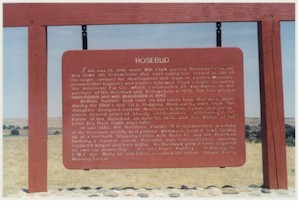I was browsing some of the camera review sites the other day and came across a blog post about, for lack of a better term, ‘Pixel-creep.’ You can read the full post
here.
I don’t personally know the author of this post, but his site is well organized, has lots of sections, and had actual advertising! So he must know his stuff, certainly more that I do. But when I read his post about camming more and more megapixels into smaller packages, i.e. point and shoot cameras, well, I just had to smile. Here is an out-take from
his post:
“I just saw that one of the camera manufactures is releasing a 16 MP compact point-and-shoot camera. 16 MEGAPIXELS IS TOO MANY ON A COMPACT! Period.”
I have two digital cameras – a Nikon D300 with 12.3 effective Megapixels and a Canon Powershot S95 with 10 Megapixels. Obviously the D300 is my primary camera, which I use for anything I plan ahead to shoot, and for and those other instances where I might reasonable expect to find something unique to shoot. I have had this camera for over two years have never regretted my purchase. I always shoot in RAW format.
Recently I purchased the Canon Powershot S95 for my day-to-day, walking-around camera. Too many times I’ve been someplace where I have some across a scene or event that begs to be photographed, only to be missed because I wasn’t lugging the D300 everywhere. I chose the S95 because it was one of the few ‘pocket’-type cameras that allow for
RAW image capture.
I did not consider Megapixel count.
I am aware of the limitations that come with a digital ‘pocket’-type cameras. And I am aware that having more than 10 or 12 megapixels is overkill, for all of the reasons the authors of
this post articulates.
However, the person who wrote this rant (his term, not mine) is a professional photographer. I was, at one point, but no longer. These days I make the majority of my income as a marketer, and in my role as a marketer I love the way the camera companies are selling these cameras.
Here’s why.
The digital transition opened the doors to millions of people who had never taken a photograph other than a Polaroid. The cost of a decent camera that shot anything other than insta-prints or prints that came back from the yellow Foto-Mat booths was very expensive. Even then, the cost of film made people very selective for each image they made.
When digital photography became mainstream, almost anyone could buy a 3.1 megapixel camera and never have to buy film again. Suddenly, photography was affordable to the masses.
As megapixel counts go up, the perceived value of the camera goes up as well. As the perceived value goes up, price point rise. As the price rises, the margin rises. Rising margins equate to higher profits, some of which in turn are hopefully plowed back into R&D. Which, ultimately, will lead to improved higher end models for the professional level cameras.
This is America, land of the free and the home of ‘Let’s Make a Buck!’ Reaaly, is someone wants to buy a point and shoot camera with 16 megapixels, why shouldn’t we sell it to them? Maybe having a point and shoot camera with more megapixels than your neighbors’ point and shoot camera makes that person feel better about themselves. We do it with cars, we do it with lawnmowers, we do it with our barbeque grills – why not with cameras?
Let’s let the professional photographers choose the cameras they feel with give them the best results possible, and let the millions of point and shoot camera owners keep buying the highest megapixel cameras they can afford. Everybody wins! The great unwashed masses have some bragging rights, the professionals will benefit with better cameras thanks to the profits Nikon and Canon will make from the over-pixelated point-and-shooters.









